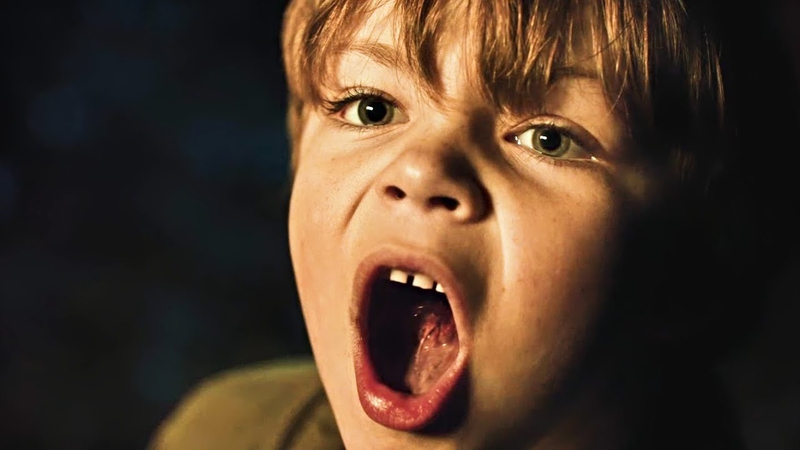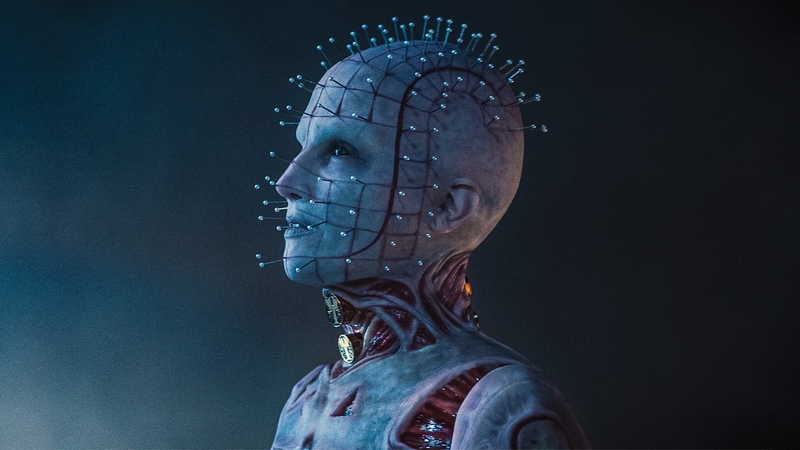Bleak and hopeless family holidays, modern-day Nazis disguised as middle-class moms, a spreading sickness of violence, and depraved clowns dismembering the innocent – 2022 has been a year filled with horror overstepping boundaries. Extreme cinema has always been considered a niche within the horror world, built only for the darkest minds and bravest souls. Horror movies such as Srdjan Spasojevic's A Serbian Film or Tom Six's The Human Centipede 2 have never been what horror fans would consider popular and for good reason. Watching scenes of necrophilia, rape, child abuse, and extreme violence are beyond the taste of most. So why have we seen an uprise in disturbing horror films that have accumulated mass appeal?
As a die-hard extreme cinema lover, nothing gives me more joy than seeing what can only be described as a resurgence in mainstream extreme horror movies. This movement brings with it the understanding that while most audience members don't want to sit through a back-to-back marathon of Fred Vogel's August Underground trilogy, they can find catharsis in pushing their personal boundaries and discovering what makes them tap out. Since 2020, the world has been shrouded in suffering. We have been living through horrific times — a global pandemic and a widespread fragmentation across society, politics, and general humanity. Historically, extreme cinema has been used as a way to convey despair in response to what happens around us. This can be evidenced by films such as Pier Paolo Pasolini's Salò, which, although an adaptation of Marquis de Sade's book 120 Days of Sodom, was a way to translate the disdain for the Italian government and how they were treating civilians. The current horror landscape is no different.

Controversial and disturbing content is often found within the underground cinema world, with the likes of Damien Leone's 2016 Terrifier slipping under the radar without much recognition. But as horror audiences look to find a form of escapism from the intensifying everyday horrors, there has been a steady increase in "mainstream extreme" films, constituted by a toned-down version of disturbing content, but still enough to cause controversy. As someone with a specific interest in "disturbing" films, seeing Leone's second entry, Terrifier 2, receive a widespread cinema release and achieve box office success felt like a triumph for films that shock.

But it's not just Art the Clown that has been hacksawing through headlines. One of the year's earlier releases garnered attention, and justifiably so. Rob Jabbaz's The Sadness showed horror fans the nature of brutality and became known as one of the most disturbing films released that year. Labeled sickening, vile, and exploitative — the holy trifecta of truly appetizing to fans of extreme cinema — but perhaps a little distasteful to anyone not up for an onslaught of inhumanity. I received numerous messages from friends who had to turn the film off because they simply couldn't handle just how nasty and mean it felt, something that is present in many examples of extreme horror. While Terrifier 2 might have gone further in terms of gore, dismemberment, and graphic detailing of mutilation of the human body, it kept the violence at a fun and frivolous level, opting for a splatter-esque comedic approach that helped to tone down its barbarity. Whereas The Sadness didn't hold back on its mean-spirited tone, making the film an even tougher watch.

However, we saw a return to heartless narratives with Christian Tafdrup's Speak No Evil, which left viewers feeling as though they had just been assaulted. The horror community echoed with cries against the absurd bleakness it holds, and yet everyone swarmed to watch this movie even after hearing of the disturbing content within. When the world around us is a constant stream of bleakness, there's an element of being able to process that gut-punch feeling by watching a movie of such awful magnitude. It feels fairly tame compared to other soul-destroying films, such as Snowtown or Threads. But when presented in the mainstream arena, it holds a powerful grip on its audience, demonstrating just how horrible a horror movie can make you feel.

Nihilism didn't cease to exist after the shock from Speak No Evil, instead, it has amped up to even more discerning levels with Beth de Araujo's Soft & Quiet. A film that might be considered one of the most upsetting pieces of cinema ever created, but again designed for a more mainstream audience. The film includes disturbing racial violence, offensive slurs, and scenes of rape. It feels like a 90-minute endurance test as to just how much human desecration one can sit through. This isn't a film that you'll come away from feeling cleansed or purged; it's a heavy watch that will sit with you for days. Yet this is a powerful piece of storytelling that mimics the atrocities we see happen daily around the world. Therefore it tells a historical story in its time of release.

Men Behind the Sun, Trauma, and Martyrs are extreme movies that represent either historical events or a feeling of unease within society portrayed by the most disturbing means possible. Extreme films are exacerbated versions of the current state of the world, telling despairing tales evoked by the emotions society is processing and working through. This is why every now and again, extreme horror emerges from the underground and trickles its way into the mainstream becoming somewhat popular as a way to consume horror stories. Texas Chainsaw Massacre and Hellraiser are both remakes of two films considered staple pieces in the architecture of disturbing films. Tobe Hooper's 1974 The Texas Chain Saw Massacre is still considered one of the most controversial horror movies to date. Therefore, reimagining this for a younger audience shows that viewers are still drawn to the darker side of cinema. Although Clive Barker's 1987 Hellraiser feels more vicious than the remake, the newer version still puts a more brutal type of horror in front of new and emerging horror fans.
We might hate to admit it, but "disturbing" has become a trend this year, and as an extreme horror fan, I love to see it. Nasty, nihilistic, and gruesome films were designed for cathartic escapism from the everyday horrors we live on repeat. The last few years have seen society living in a Hellish reality, so it only makes sense for us to find comfort in watching extreme horror films. Sometimes it's ok to embrace the nefarious and accept that mainstream extreme lets us push personal boundaries and venture (safely) into the darkness.






